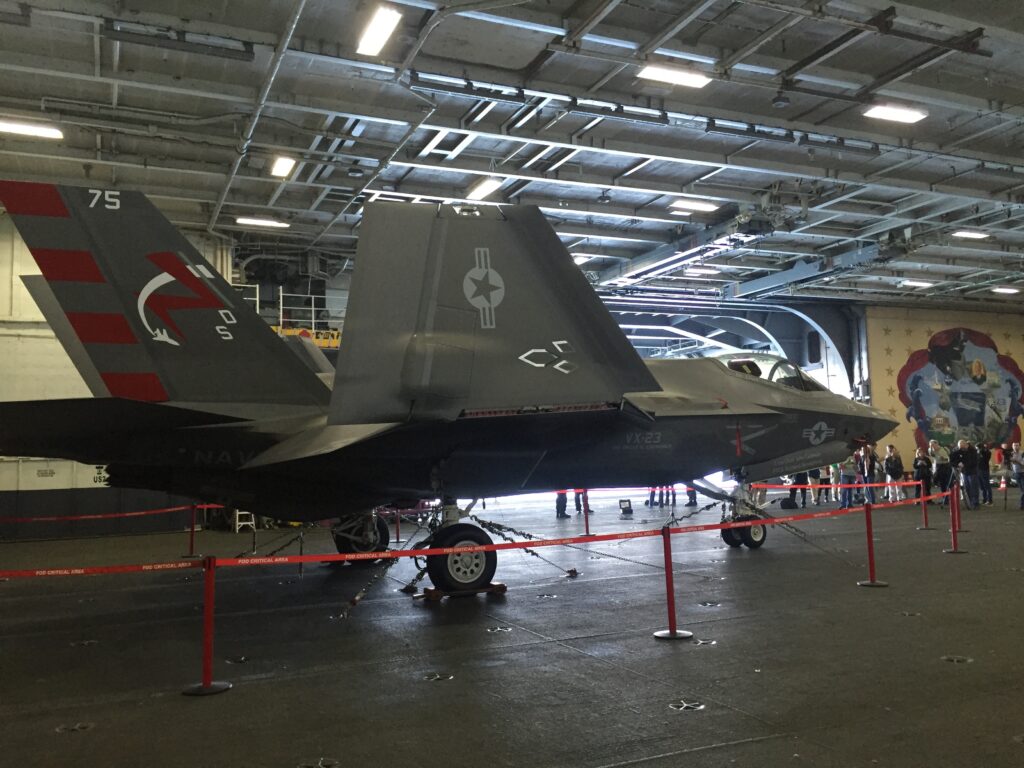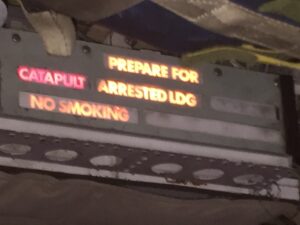Navy Winds Up F-35Cs Development Tests On USS Eisenhower
Posted on
ABOARD USS EISENHOWER: After all the talk from senior Navy leaders about the life cycle costs of the Joint Strike Fighter program and the limits of stealth over the last five years, it was intriguing to hear top Navy commanders and pilots praising the performance of the F-35Cs being tested here.
The pilots were using the third generation helmets, a little over a month since the first one was delivered by Rockwell Collins. The verdict from three different pilots: it improved their ability to fly and land on the carrier at night, perhaps the most difficult feat for any pilot. They also got the chance to push the plane and the carrier to their limits. The carrier was operating in crosswinds of up to 40 knots, and the planes were taking off with nearly full fuel loads of 50,000 pounds (fuel plus 34,800 pounds of airplane) at the lowest speeds possible to establish the baseline for F-35C operations from here on out.
As the planes cleared the bow after being catapulted forward, they were falling up to 17 feet, testing the pilots’ abilities to control the plane, as well as pushing the planes avionics and control surfaces. Joe DellaVedova, the F-35 program spokesman, called the effort “once in a lifetime” testing.
One of the more intriguing comments on the interaction between ship and planes came from the Mighty Ike’s captain, Stephen Koehler, a former F-14 pilot who now commands one very big ship. He noted that the ship drivers use each of the four huge propellers to best position the ship as she’s underway to give pilots the best combination of wind and takeoff speeds.
Rear Admiral John Haley, commander of Naval Air Force Atlantic, told us the aircraft was about 80 percent of the way through development testing. This was the second of three DT events. The Navy plans to declare Initial Operating Capability by the end of August 2018. One thing that separated this from the first flights aboard the USS Nimitz was that the three-wire, the one pilots like to hit the most and for which they garner the most praise, was out of commission through the voyage. So we couldn’t report on how the F-35 pilots were besting their F-18 Super Hornet colleagues on catching the three-wire every time as happened aboard the Nimitz. However, several pilots I spoke with said they had been targeting the same area and hit the target each time.
Also, DellaVedova said in an email that the program stressed the airframe of the F-35A, the Air Force version, for the equivalent of two lifetimes. The test, known as the F-35A Full Airframe Durability Test Article (AJ-1) finished the day before we flew to the Ike, completing 16,000 hours of maneuver and buffet loads cycling.
Subscribe to our newsletter
Promotions, new products and sales. Directly to your inbox.


